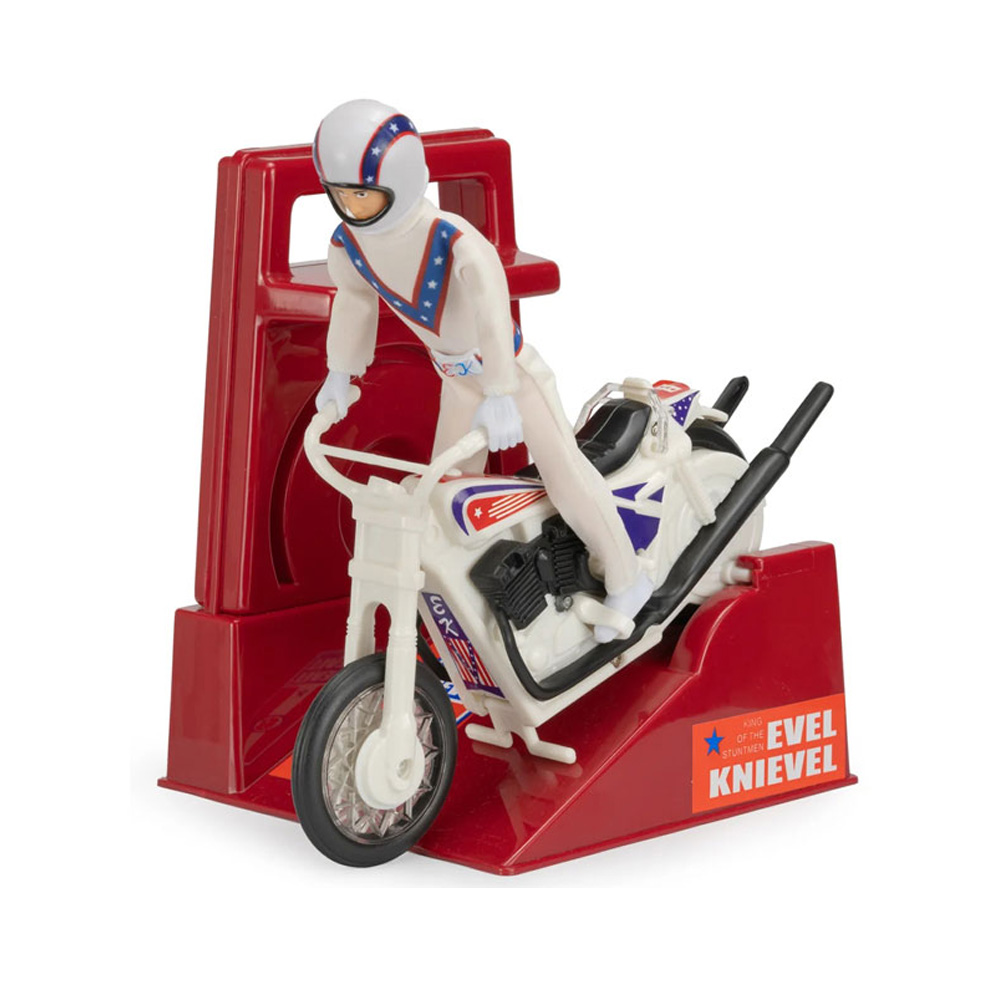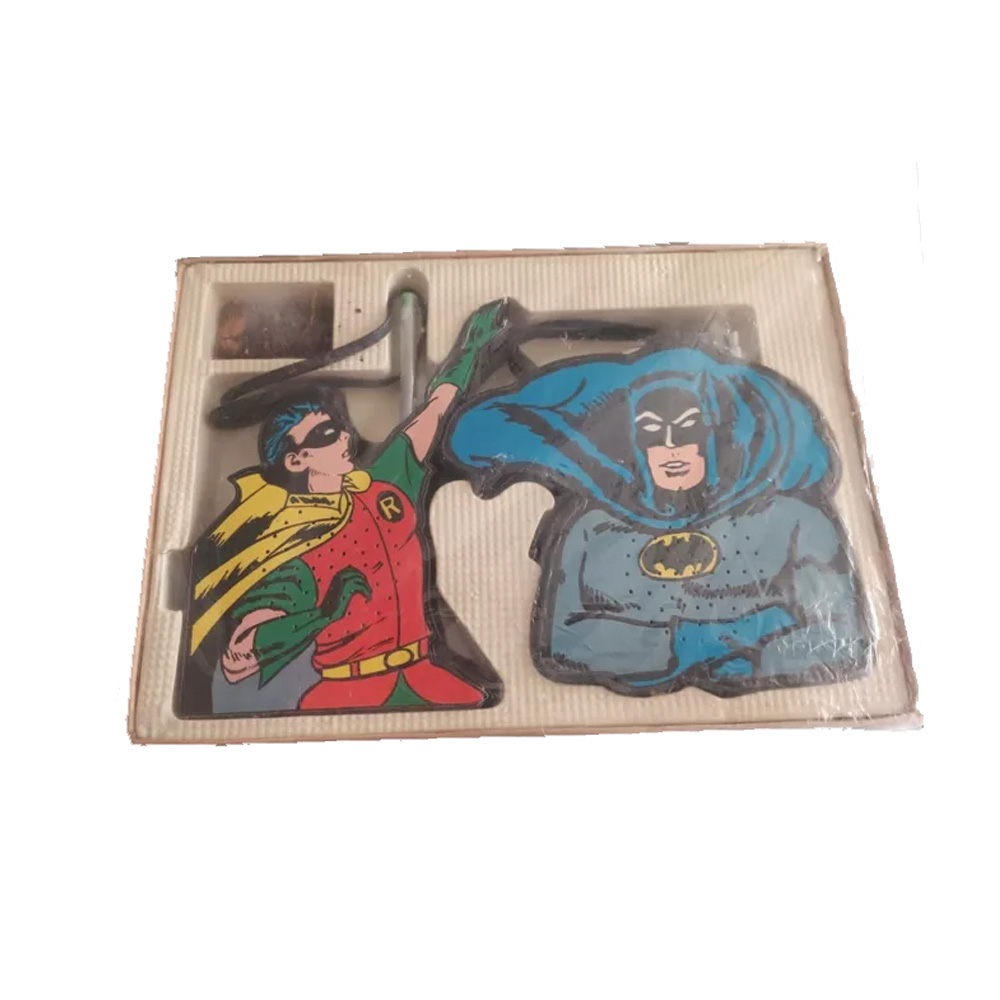
⏰ “Don’t leave it too late — some Christmas best-sellers sell out early each year.”
Evel Knievel Stunt Cycle Top 10 Christmas Toys 1973
Evel Knievel Stunt Cycle Top 10 Christmas Toys 1973
The Evel Knievel Stunt Cycle roared into Christmas 1973 like a miniature hurricane—loud in spirit if not in sound. Picture the living room: twinkling lights, tinsel on the telly, Quality Street wrappers everywhere, and that unmistakable crank-crank-crank of the red power launcher. A kid leans in, releases the lever, and the white-suited daredevil rockets across the carpet, hits a stack of books, and—sometimes—clears them. Sometimes he doesn’t. Either way, cheers erupt. More than a toy, this was a tiny doorway into the fearless world of the era’s biggest stuntman.
1973: A Year in Context
Britain in 1973 was buzzing with spectacle and change. Colour TV had fully settled in, Top of the Pops blasted glam rock into living rooms, and Saturday teatimes meant variety shows, football highlights, and clips of impossible feats. Across the Atlantic, Evel Knievel turned motorbike jumps into must-watch events, complete with star-spangled leathers and a swagger that kids adored. In that climate, a toy that let you stage your own living-room daredevilry felt not only timely, but inevitable.
How the Stunt Cycle Worked
The magic was in the launcher. You slotted the motorcycle’s rear wheel onto the geared base, cranked the handle to build up spring-loaded power, aimed, and then slapped the release. Instantly, the bike tore forward, gyroscope humming, rider clinging on for dear life. With a cereal-box ramp or a couple of stacked annuals, the lounge transformed into Wembley on jump night. Because the system was mechanical, it never needed batteries—just energy, imagination, and enough floor space to attempt “one more go.”
Christmas Morning Chaos (of the best kind)
Kids unboxed the Stunt Cycle, skimmed the pictorial instructions, and immediately started cranking. First came small hops over wrapping-paper tubes. Then, as confidence grew, the jumps got wilder: cushions, shoe-box buses, even a sleeping dog (quickly vetoed by Mum). Some runs ended in glorious landings; others sent Knievel cartwheeling across the hearthrug. Yet failure barely mattered. Because the toy reset fast, attempts piled up, and laughter did too. Soon, siblings became pit crew, dads served as crowd control, and the whole family turned engineer to get that “record breaker.”
Price Then and Now
Back in 1973, a boxed Evel Knievel Stunt Cycle sat firmly in the “main present” bracket. Prices varied by shop and set, but the value was obvious: it delivered day-one excitement and months of replay. Today, clean vintage sets—especially with intact decals and the classic red launcher—fetch serious collector interest. Nevertheless, the true worth remains the same as it did under your tree: repeatable thrills for any age willing to kneel on the carpet and try again.
Why It Caught Fire With Kids
Firstly, it felt fast. That sudden surge off the launcher thrilled even cautious riders. Secondly, it invited tinkering. Children learned that tiny changes—ramp angle, run-up distance, floor texture—made massive differences. Thirdly, it encouraged community. Friends brought their own bikes; cul-de-sacs hosted jump-offs; schoolyards hummed with talk of best distances and spectacular crashes. Crucially, the toy mirrored what kids saw on TV: a caped showman defying gravity while the crowd held its breath.
Adverts, TV, and the Power of Spectacle
Adverts leaned hard into drama: slo-mo leaps, heroic landings, and the promise that you could do it too. Meanwhile, the real Evel Knievel delivered the myth in living colour—leaping cars, buses, and canyons. According to the Stunt Cycle’s history, the toy became a phenomenon because it translated that TV spectacle into a child’s hands. No electricity, no screens—just a crank, a launch, and a dare.
Kitchen-Table Engineering
Households quickly discovered that half the fun lived in the build. Encyclopaedias made the sturdiest ramps. Vinyl records (don’t tell Dad) created slippery runways. Biscuit tins, toy bricks, and annuals provided altitude. Because every lounge was different, each jump course felt unique. Children learned to measure run-ups, test traction, and adjust angle—STEM skills smuggled into pure play. And when the rider inevitably tumbled, the lesson was simple: fix, tweak, try again.
Play Patterns That Lasted Beyond Boxing Day
The Stunt Cycle avoided the fate of many one-and-done Christmas hits. It begged for new challenges: longer runs down the hall, garden-path leaps, or two-bike duels. Some kids built “stadiums” from chairs and blankets. Others made posters and tickets, then charged 2p for entry to the big jump. Because resets were instant and outcomes varied, boredom rarely appeared. Moreover, the toy scaled beautifully with imagination: a small ramp could keep a five-year-old busy; a house-length runway could fascinate a teenager.
Safety, Crashes, and the Thrill of Almost
Carpet burns happened; a few scuffed skirting boards did too. Yet the cycle itself took the knocks—with scuffs turning into badges of honour. Parents appreciated the lack of batteries, the tidy footprint, and the way siblings cooperated to stage runs. Children loved the suspense: that breath-held moment between take-off and landing when anything could happen. As with the real showman, the almost was everything.
Nostalgia & Legacy
Ask anyone who owned the Stunt Cycle and they’ll grin. They’ll talk about the launcher’s crunchy ratchet, the white boots skittering across tiles, and the holy-grail landing that finally stuck. They’ll remember cousins chanting a countdown and the triumphant whoop that followed a perfect arc. The toy’s legacy lives on in modern stunt sets and YouTube compilations, but its heart remains the same: wind, release, and believe.
1973 Christmas Memories
After turkey and trifle, living rooms became arenas. Grandad paced out a regulation run-up. Aunties served as judges. Someone fetched more annuals, and someone else cleared the cat from the runway. The Queen’s Speech faded into background hum as the next attempt thundered forward. Win or wipe-out, the applause sounded the same. That’s why memories of this toy stick: it turned a quiet December evening into a shared epic.
Conclusion
Half a century later, the Evel Knievel Stunt Cycle still feels audacious. It gave children speed, agency, and a front-row seat to their own daring. If you felt that rush in 1973, revisit the era in our Top 10 Christmas Toys 1973 archive, explore how stunts sit alongside other icons in the most popular Christmas toys, and compare the thrill of then with today’s picks in our Top 10 Christmas Toys 2025 guide. And for brand deep-dives and more toy history, stroll through our Hasbro page as you relive a season when a crank and a ramp could make you a hero.
Some links on our site are affiliate links. If you buy through them, we may earn a small commission — at no extra cost to you. 🎄
⏰ “Don’t leave it too late — some Christmas best-sellers sell out early each year.”
Available From:
You might also be interested in...
More toys from this brand...
No items found.



